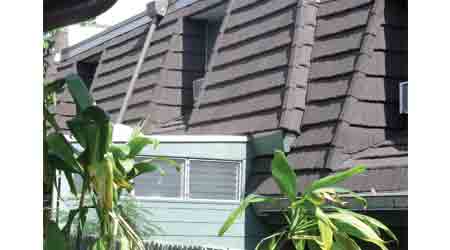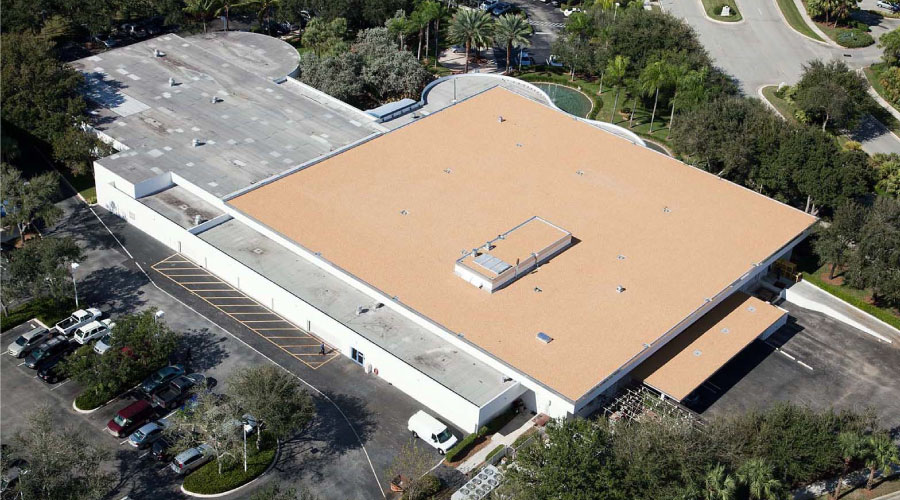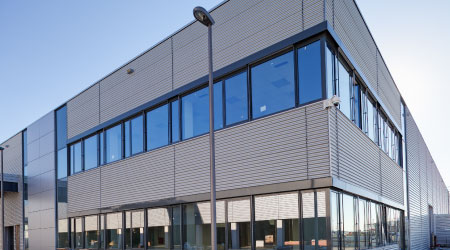Weather Protection a Basic in Metal Roofing Repair or Replacement
Part 2 of a 3-part article on diagnosing problems and selecting and installing metal for roofing or walls
The first order of business in a metal roof project is to understand the issue at hand. Proper diagnosis of the problem will provide the best clues for deciding to repair or replace the system. Whether approaching a metal roofing repair or replacement, one should pay close attention to roofing basics: protection from the sun, wind, and rain.
Sheet metal surfacing should not exhibit solar degradation and should stand the test of time. If the surface of existing metal roofing is an issue, there are a number of coating products that can reestablish solar protection. However, most coatings do not have the needed elastic properties to provide waterproofing at movement joints. Be sure to select an appropriate product and system to provide the protection desired.
Sheet metal roofing systems must be able to stay in place during windstorms. Designers need to provide appropriate wind uplift design for the local climate. The worst-case scenario is to have a new roof blow off in a windstorm. It is a good idea to have an engineer provide design of sheet metal roofing and cladding attachment. If an existing system has attachment deficiencies, replacement is often the only choice for a long-term solution.
Wind-driven rain can push water into unexpected places and heavy rainfall can overwhelm many drainage designs. Ice and snow also can be challenging since ice can form upwards and build up within laps, forcing joints open. If water leakage is the issue, finding the source of water intrusion is important. This will drive the repair or replacement scheme.
Correcting inadequate laps in existing metal roof systems is challenging, especially under long, standing-seam metal roof panels. The best solution is to correct lap deficiencies by detaching the affected panels and reinstalling the system with the correct laps. Although a surface seal is sometimes a quick and simple choice for repairing deficient laps, many times it is a temporary fix. Any sealants or coatings applied will need to be properly chosen and maintained. They should not be used where thermal expansion of the panels is expected or at joints where the underlayment needs to weep or allow water to escape from inside the system.
Sometimes inadequate insulation, inadequate vapor/air barriers, or inadequate ventilation can cause warm internal air to condense on the underside of roofing systems and drip down on the interior. These types of problems are often mistaken for roof leaks. A contractor can correct a condensation issue from the interior with added insulation or vapor/air barriers. However, this type of problem will often lead to a roofing replacement that includes a new vapor/air barrier and rigid insulation installed over the top of the structural roof deck.
Even though topical surface treatments are available, for a long-lasting and durable roofing or cladding system, a quick life-cycle analysis often proves that partial replacement (to address specific lapping issues) or full replacement is the more economical way to tackle sheet metal roof or wall leak problems. One great thing about sheet metal products is that they are relatively lightweight. As such, contractors can often install a new sheet metal system over the top of an existing system. An engineer should provide a structural evaluation to confirm the capabilities of the existing structure. If the structure has excess capacity, a light-gauge metal framing and new steep-sloped architectural sheet metal can be installed over flat and low slope roofs. This can provide a building a completely different aesthetic.
Related Topics:














